Jotun Penguard HB and Hardtop HB advice, please
123
123
|
|
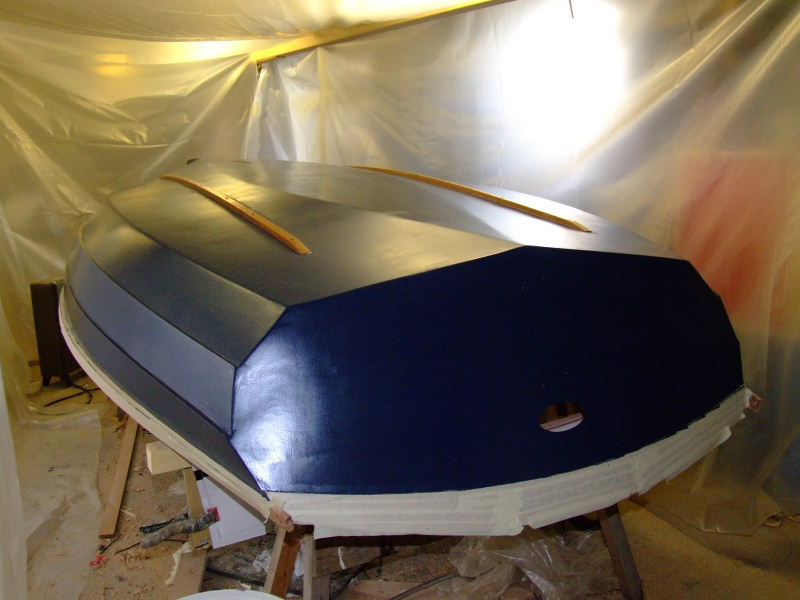 ok, wrong end. Did my best. Brian |
|
|
Thanks Brian, but I already have these pics
 could you turn the boat to show the other side, now ?? What I would like to see is how the flat bottom joins the strakes at the front end ... and there is yet no pic of this on the web (I searched for hours !) That's why I asked Michael a nice picture, where the reflections on the glossy paint would show the curvature, and permit me to understand how it's made, just like I did with Polly Wee ... 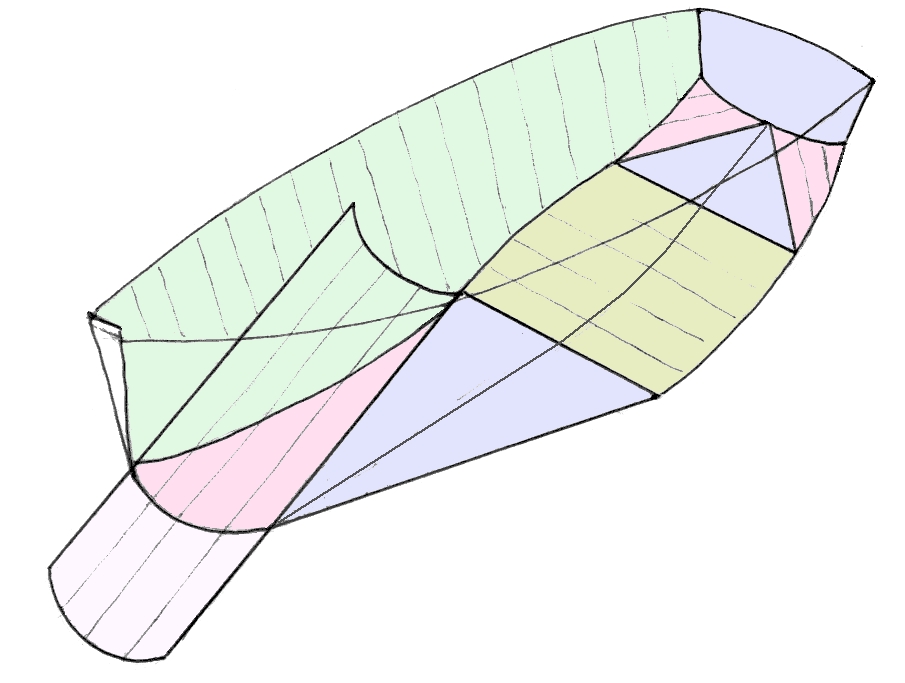 .... ....
Eric (my fisrt insertion of an image on your website : hope it will work ......) |

|
Chris Waite |
Re: Jotun Penguard HB and Hardtop HB advice, please
|
|
In reply to this post by Michael Rogers
Lovely descriptive word, isn't it?
"Gunkholing" Yes I agree about the Eastern Seaboard - Northern section I understand, New England. I also agree about the acute on chronic geriatricity; to think I used to look forward to my second childhood And now, I can't remember why Chris |

|
Michael Rogers |
Re: Jotun Penguard HB and Hardtop HB advice, please
|
|
In reply to this post by eric17
Eric
In a few days time I will be turning the boat over, for final attention (I hope!) to her bottom. At that stage I will try to do you a pic. However I'm not sure it will help you more than the two pics Brian has very helpfully lifted off the Swallowboats website for you. Can I refer you to those again, to see if I can explain? The upturned painted view shows very well the shape of the flat bottom piece. The naked (unpainted) bow view is probably even more help. Imagine the point at which the bottom strakes, being stitched forwards on each side to the bottom piece, run out of bottom-piece-edge to be stitched to, and meet each other round the front point of the bottom piece: in the picture this where the upcurve of the forefoot starts. The bottom strakes here are shaped such that, instead of their edges running on parallel to each other, they curve away from each other. In order to be stitched to each other, they have to be pulled up out of the horizontal plane, and stitching them together creates the three dimensional curve of the forefoot. You could simulate this with a piece of cardboard. Cut a v-shaped notch, the apex of which represents the point at which the flat bottom piece comes to an end, and the v itself is the gap between the forward ends of the bottom strakes. Make the sides of the v rounded (ie widen the v so that the sides are identical convex curves). Pull the two sides together (stitching? glue?) so that they touch along their edges. Voila! (excuse my French) You have your curved forefoot. It's very elegant, and basically simple. Furthermore the resultant curvatures of the bottom strakes extend backwards to form the entry and then the run of the bilge aft on each side, once these curved inner edges at the front of each bottom strake have been joined. I'm no engineer or marine architect, but I do manage to grasp that the overall shape (multiple curves) of the hull is determined by the precise shapes of the strakes and the lines along which they join adjacent strakes. I believe a computer programme produces from the 'round' the flat shapes which, appropriately joined together, produce the lovely shape of the hull. All of which means that relative idiots such as myself can have the thrill of creating something of real functional beauty. Fantastique! I hope that helps. Michael |
|
|
Michael and Brian,
thanks a lot for your kindness and your helpfulness, but no, your explanations are not enough. I must say I have the same disease that Chris Waite: the desire to find new forms, and understand how they can be obtained. And create something that reflects these ideas. I have followed with interest, for several years, his creations: Tit Willow, Octavia in particular. But when I found, on this very website, the first images of Polly Wee & "Premise", the click was instant: it was exactly what I was looking for years! Have you read his pages, about 23 Premise and Polly Wee? It all started long ago, in the 70s. Two boats were beached side by side on a Breton Islands: a Mouquetaire Herbulot - on which I was sailing - and a Muscadet, designed by Philippe Harle. Same size, same weight, both boxy single-chine plywood boats. But while the Mousquetaire had an almost flat bottom and an angular forefoot (which banged hard in chop), the Muscadet had a superb rounded stem! Philippe Harle had found how to "curl", (you used the right word, just like a careless reader curls the pages of a book), "roll" the plywood to get rounded sections! That thing has remained in my head for years. Earlier this year, when, in France, a friend presented, on our website, the project of a little Sharpie ("Little Bigornick"), I searched the way to improve its "flat iron" forefoot. In seeking examples to explain what I wanted to do, I found CW's project : Bingo! I immediately began a fruitful correspondence with him (80 emails so far, I think). What I expect of your photos is to see how these curves are made: cylindrical or conical development? I think a few photos, drawings and analyzes of the shapes of Premise 23 and Storm 17 (and maybe BayCruiser 20) will help you: I seek to identify the straight lines on the curved portion of the forefoot.    As you can see on the modified photos, these are the reflections on the paint which enable me to find them, and to deduce the type of development (cylindrical, conical). But of course, I will have to draw up plans on paper, but probably mostly with design softwares, to determine exactly what happens (I cowardly rely on your webmaster to achieve this!). And Chris, instead of playing with words (and saucy innuendo?), can you help me a bit to explain what I want?. |

|
Paul H (admin) |
Re: Jotun Penguard HB and Hardtop HB advice, please
|
|
Eric,
Bonjour. The Polly Wee drawings that Chris sent us are enough to enter the design into the Free version of DelftShip (http://www.delftship.net/) - then you can fiddle with the design to suit your specification - longer, wider etc. Mathematics alert!  DelftShip uses a variation of Bezier spline surfaces (named after your famous French mathematician) which can represent any shape. So you are not limited to planes and cylinders. When we put Chris's bulkhead offsets into DelftShip it will fit a fair surface between them...and create a hull that matches the bulkheads and key points at bow and transom that Chris created. The curves between the key points will be smooth without discontinuities, except for the hard chines of course. The Carlson Hulls program does something similar, but DelftShip can import a Hulls file and offers superior hydrostatic calculations. Both programs can adjust the beam, length and V angles....however they will not offer the efficient use of 8ft x 2ft ply that Chris's simple design offers. Also DelftShip will allow you to create a cylindrical section, although you have to remember that ply prefers curvature in one direction e.g. a ruled surface. Does that help? -Paul PS That has to be the best hijack of a thread this year 
|
|
|
Hijack ???? ..... Ahem .....    Well...  ???? ????
Eric |
|
|
Continuing the diversion into hull shapes, here are some, not very clear, photos that try and show how Swallow Boats do the transition from the flat bottom plank to the bow on my Winsome hull:
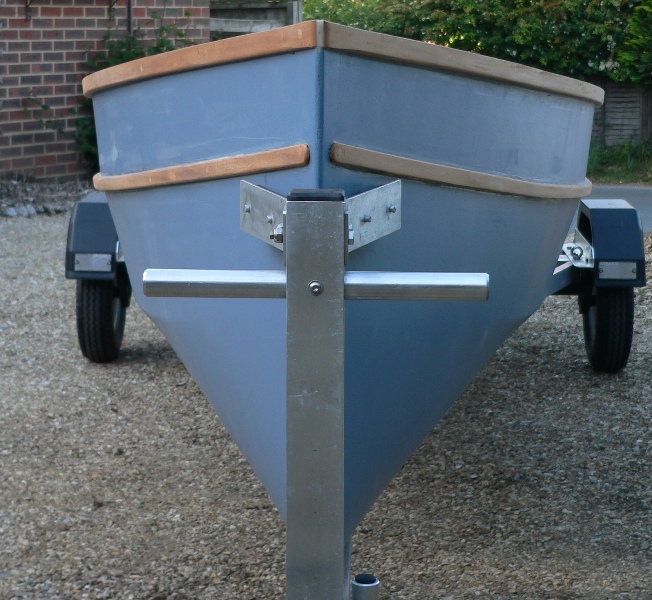 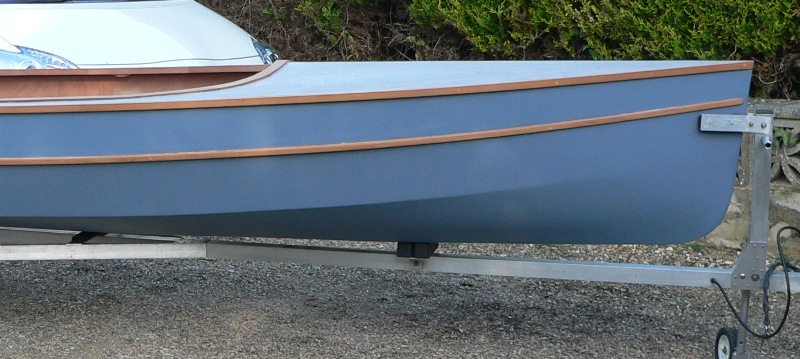 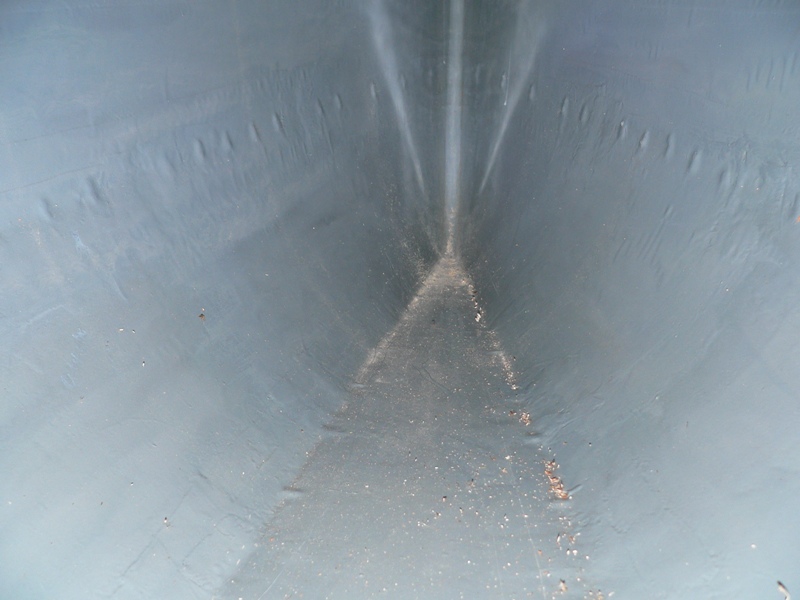
|
|
|
Hi Jeremy,
thats exactly what my last project looks like : (http://www.nauticaltrek.com/12723, bottom of the page) 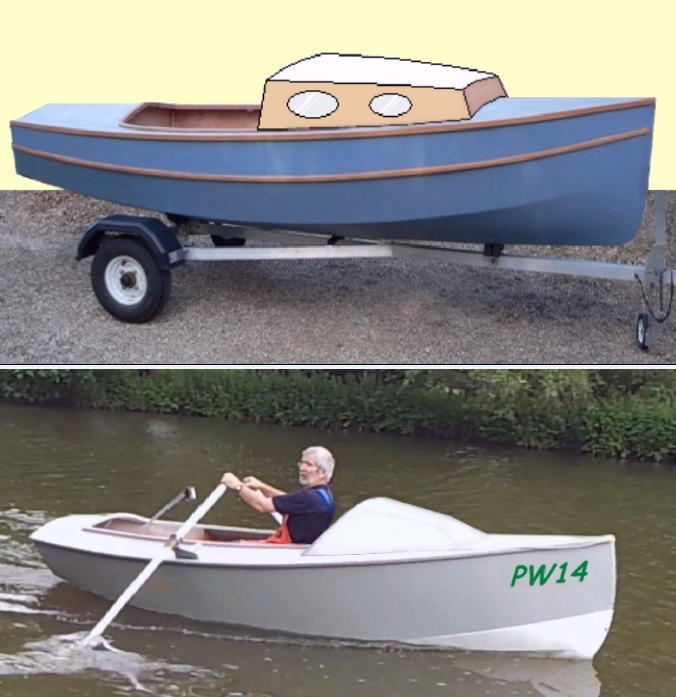  Eric Eric

|
|
|
Thanks for the link to your website, very interesting.
You might like to take a look at Michael Storer's latest 12' sports dinghy. Building of the first example is just starting. 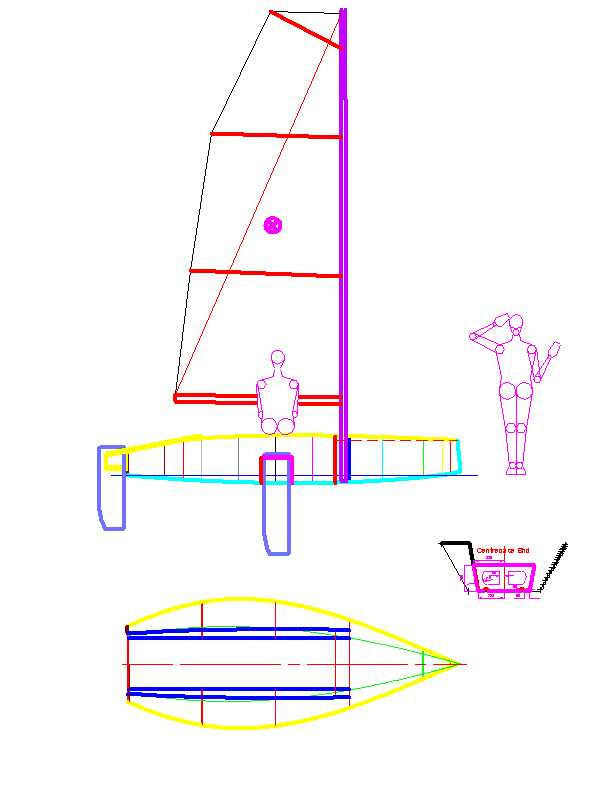 http://www.woodworkforums.com/f169/12-gis-i-see-hull-down-your-horizon-135023/index12.html#post1518539 Brian |
|
|
Hi Brian,
I wanted to do something for the translation of my page, but never got the time  The dinghy 12' is too sporty for me, I would prefer a "Cruising Goat" !   |
|
|
I use Chrome and that seems to translate your blog very well.
FloMo does some very interesting conceptual design work. http://flo-mo.weebly.com/ He is having a lot of fun just now proving to himself that his 1 sheet double ended rowboat is actually buildable. http://forum.woodenboat.com/showthread.php?149260-Baby-Boat-the-one-sheet-boat-madness-continues 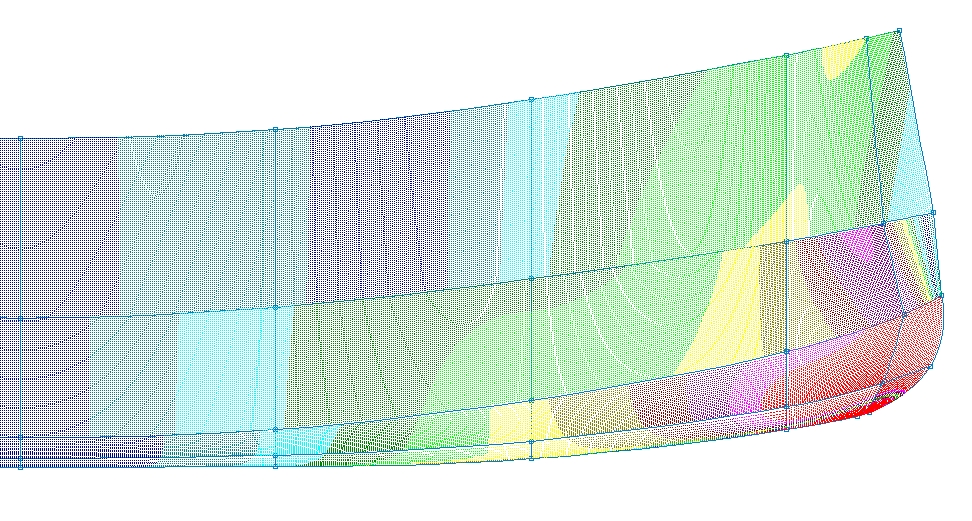  Brian |
|
|
For the non-geeks amongst us, it may be worth pointing out that when Google's Chrome browser detects page that is not in the computer's default language, it provides a bar at the top of the window, offering to translate the page for you.  It is, indeed, an incredibly useful, if not perfect feature, for a non-linguist like me (not to mention sometimes amusing and just occasionally confusing)! 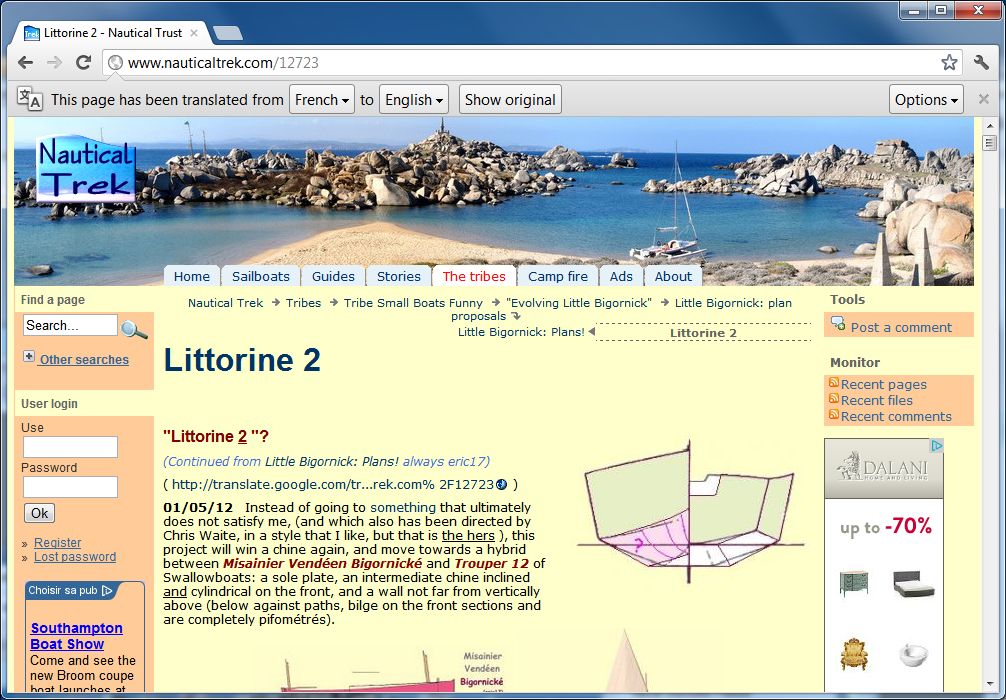 Try it!
Greg Chapman
GregAfloat - My Boating Biography |
|
|
Eric, on your web page you mention Petrus by Jurgen Sass. I find this narrow flat panel keel very interesting. It's not a native shape of the UK, yet it constantly turns up when fast rowboats are discussed. Most prominently in the Guideboats and the Herreshoff rowboat which both seems fast designs for their lengths. In testing Jugen found this form was 1 knot faster than the classic Whitehall form.
Here's the drawings from boatdesign.net   and the very clever Chris Waite style simple cutting form from a minimum of plywood sheets.  more here http://www.sassdesign.net/Design%20of%20a%20fast%20rowboat.pdf Jurgen is happy to supply drawings free of charge, on the promise that if built the build should be blogged on boatdesign.net. Brian |
|
|
Hi Brian & greg,
The trick would be to build Polly Wee the same way as the ‘REDFIN 15’ Classic Sailing Dinghy ( trailawayboatkits.com.au ), but with a flat one piece bottom. They call it “butterfly” at B&B yacht design, but Chris prefers “spread eagle”! 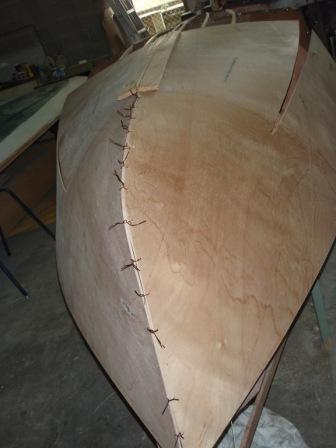 For the translation, well, Chrome is a wee bit better (??) than former "Google Translation" … Not worth muting from Mozilla to Chrome.  |
«
Return to General Discussion
|
1 view|%1 views
| Free forum by Nabble | Edit this page |
